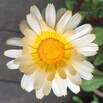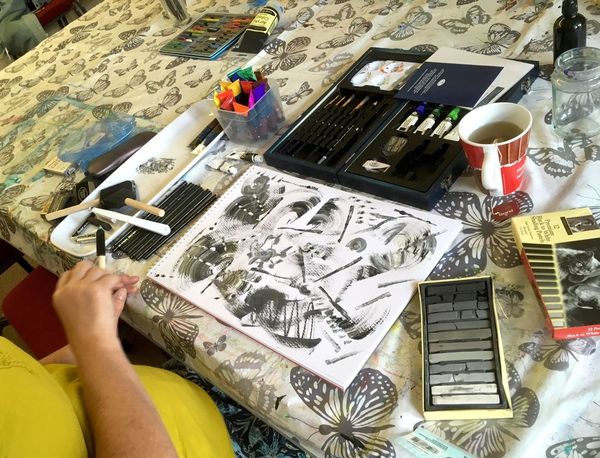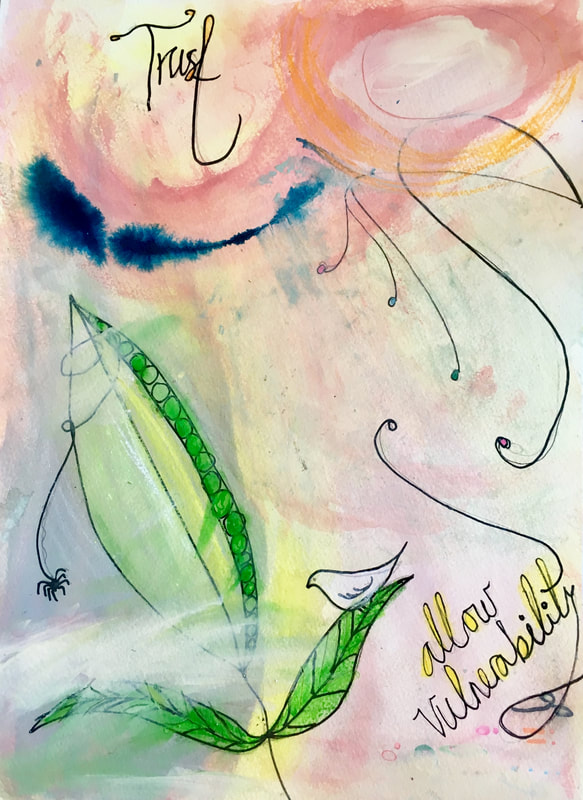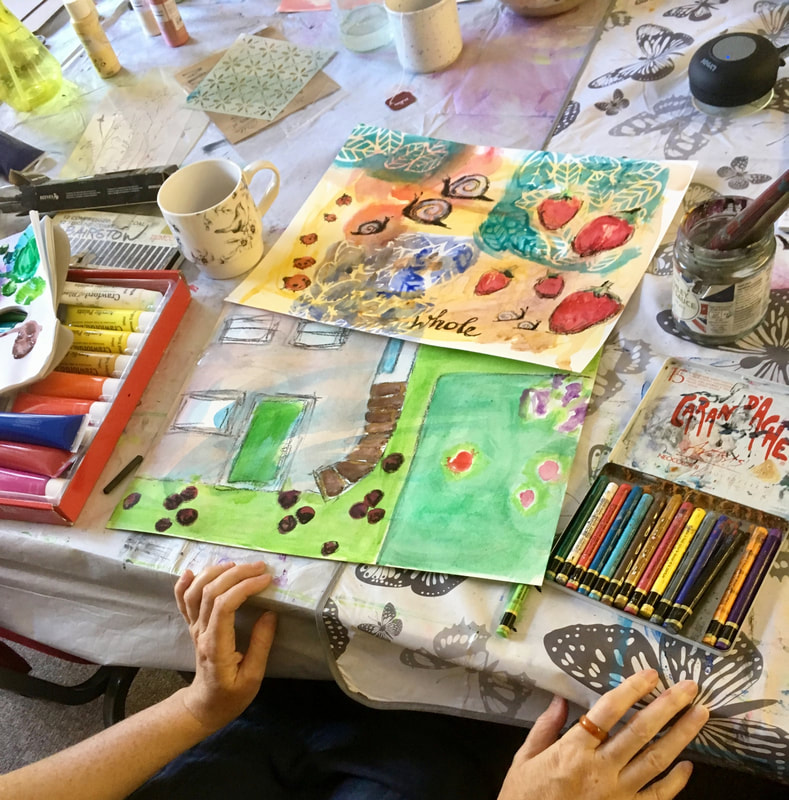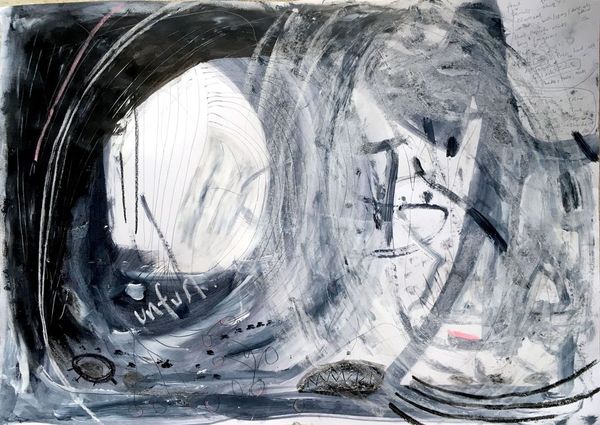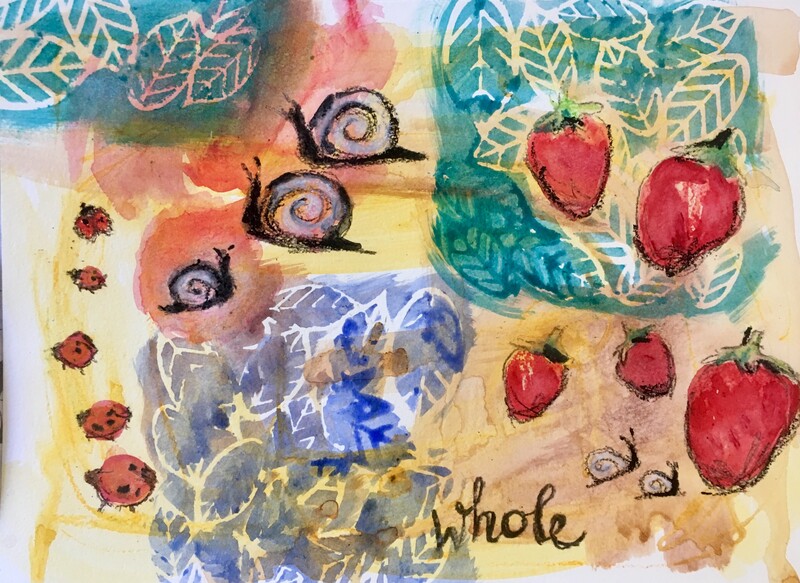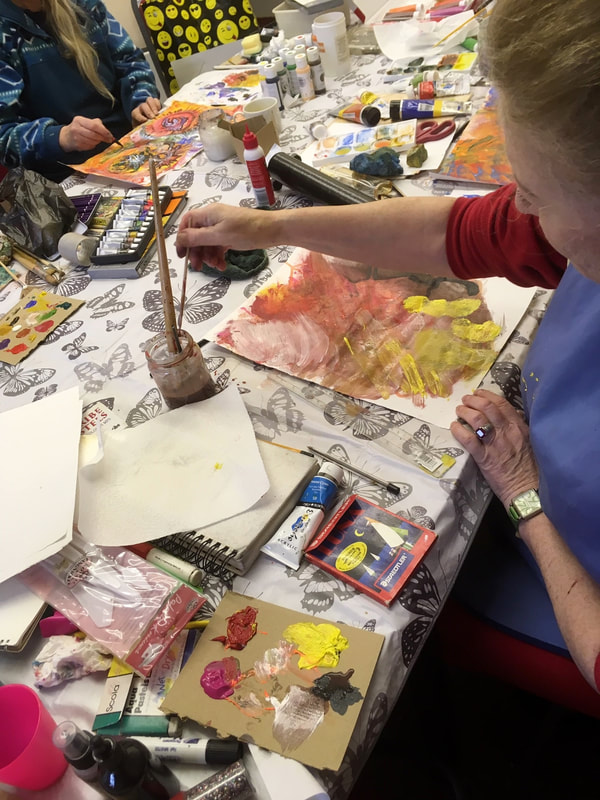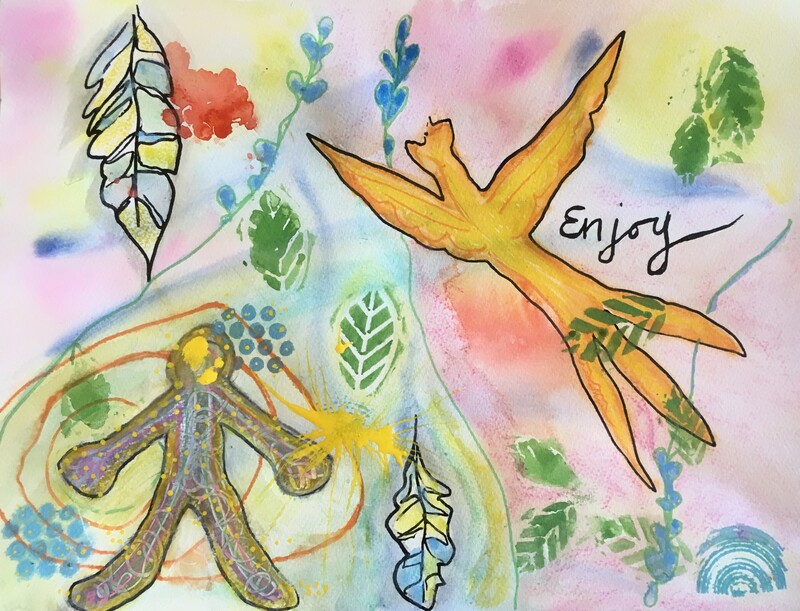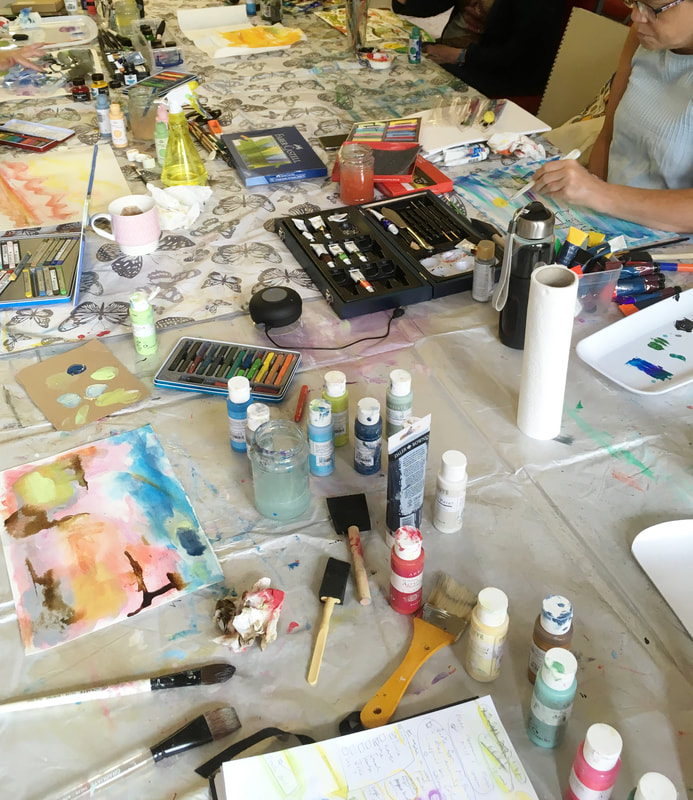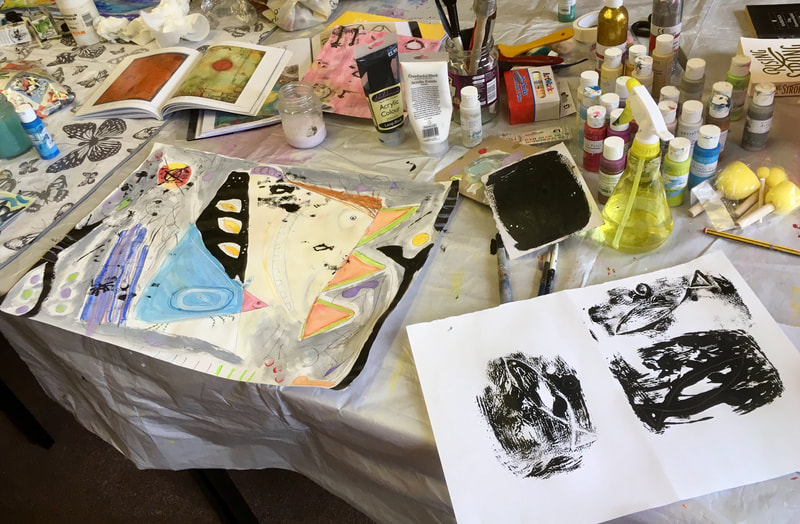A suggested materials list…
*Important* You really don’t need all of these – it can create a huge block to starting, thinking that you do and many items are pretty expensive.
Please initially start with what you already have, making marks, shapes colour with any pens, pencils, paints, earth! brushes, fingers…
I'll aim to base workshops on supplies that we all have.
I have a big bucket of paints, brushes and other resources that group members are welcome to use for free and dip into, and I also supply free paper to new members if they want it, however some supplies are very costly and become quite precious too, such as inks and watersoluble crayons etc and beyond trying out a little of others', it's best to buy some yourself when you can, to really get the best use and explore what they do. The very reasonable £5 workshop fee covers the hall hire and not very much else and I and others cannot always afford to share expensive materials, although am happy for you to try a little!
You will probably find that as you progress you add more as you go along… here are some of the materials I use and mention in workshops…
Set of brushes good for acrylics/watercolours (a few small flat and round along with medium flat and round, and several foam brushes which are good for blending).
A watercolour pad/mixed-media pad -great and strong enough for blending, taking layers and repeated application. However, to start many other papers are good too. I’ve been supplying cartridge-type paper that I bought (made from recycled coffee cups! called ‘Flat White’😊) Large paper - A2 – is great for intuitive painting as you can move your arms, hands, brushes, fingers in a wonderful unrestricted, expressive way.
A palette – this could be a large plate, a wipeable reusable tray, a piece of cardboard or strong paper (you can then also use it as a piece of paper for collage!
Acrylic paints - choose at least 6 colours, a good range and selection, (and perhaps later a few colours you might not initially choose) and some neutrals, along with black and white). You can absolutely start – and continue! - with acrylics from craft shops - there’s a wonderful range of bottles of semi-fluid acrylics in The Range.
Various pens and hard/soft pencils that you have. Water-fast pens can be good to use with paints for final layer detailing…
Acrylic and/or India ink (a few colours) – there’s a wide range of these online and in local shops, also pearlescents, a wide price range too. You don’t need the most expensive. These blend with paints/water-soluble crayons really well but you can also play with drawing/writing inks!
Inktense blocks by Derwent are great and portable, blocks of pure ink that can be used in a wide variety of ways - on dry, wet, on material too...also shavings from the block into water create inks to use in the regular way...
Posca paint pens (fine or medium point are great) or Sharpie water-based paint pens – great for adding detail when the painting is dry.
Caran d'Ache Neocolor II Artist Crayons – my favourites 😊 these blend with everything else and there’s just something about handling a crayon that feels so freeing and innocent too – reminders of painting as a child.
A set of pastels – soft and/or oil pastels
Various sizes of charcoal
Fine glitter – a few colours – mixes with the paint or fun to add in a final layer
Stencils can be fun to experiment with – bought or homemade – and stampers too – bought or homemade.
Spray bottle to wet the paper and also help with blending, and with drips in the layering of the paint/inks :)
Decorative papers for collage, origami papers are good! Also you can make your own painted papers to cut up and keep for adding to other paintings… Also magazines are great for collage…
A large canvas/canvas board (The Range or The Works are good) would be great to use – am going to suggest this soon in the group – to add a layer each week in the session and/or at home…to build up over time. Unfortunately, we don’t have enough storage in the hall to keep them but it would be great as a home project, to layer over the weeks…perhaps based on what we do in each session.
*Important* You really don’t need all of these – it can create a huge block to starting, thinking that you do and many items are pretty expensive.
Please initially start with what you already have, making marks, shapes colour with any pens, pencils, paints, earth! brushes, fingers…
I'll aim to base workshops on supplies that we all have.
I have a big bucket of paints, brushes and other resources that group members are welcome to use for free and dip into, and I also supply free paper to new members if they want it, however some supplies are very costly and become quite precious too, such as inks and watersoluble crayons etc and beyond trying out a little of others', it's best to buy some yourself when you can, to really get the best use and explore what they do. The very reasonable £5 workshop fee covers the hall hire and not very much else and I and others cannot always afford to share expensive materials, although am happy for you to try a little!
You will probably find that as you progress you add more as you go along… here are some of the materials I use and mention in workshops…
Set of brushes good for acrylics/watercolours (a few small flat and round along with medium flat and round, and several foam brushes which are good for blending).
A watercolour pad/mixed-media pad -great and strong enough for blending, taking layers and repeated application. However, to start many other papers are good too. I’ve been supplying cartridge-type paper that I bought (made from recycled coffee cups! called ‘Flat White’😊) Large paper - A2 – is great for intuitive painting as you can move your arms, hands, brushes, fingers in a wonderful unrestricted, expressive way.
A palette – this could be a large plate, a wipeable reusable tray, a piece of cardboard or strong paper (you can then also use it as a piece of paper for collage!
Acrylic paints - choose at least 6 colours, a good range and selection, (and perhaps later a few colours you might not initially choose) and some neutrals, along with black and white). You can absolutely start – and continue! - with acrylics from craft shops - there’s a wonderful range of bottles of semi-fluid acrylics in The Range.
Various pens and hard/soft pencils that you have. Water-fast pens can be good to use with paints for final layer detailing…
Acrylic and/or India ink (a few colours) – there’s a wide range of these online and in local shops, also pearlescents, a wide price range too. You don’t need the most expensive. These blend with paints/water-soluble crayons really well but you can also play with drawing/writing inks!
Inktense blocks by Derwent are great and portable, blocks of pure ink that can be used in a wide variety of ways - on dry, wet, on material too...also shavings from the block into water create inks to use in the regular way...
Posca paint pens (fine or medium point are great) or Sharpie water-based paint pens – great for adding detail when the painting is dry.
Caran d'Ache Neocolor II Artist Crayons – my favourites 😊 these blend with everything else and there’s just something about handling a crayon that feels so freeing and innocent too – reminders of painting as a child.
A set of pastels – soft and/or oil pastels
Various sizes of charcoal
Fine glitter – a few colours – mixes with the paint or fun to add in a final layer
Stencils can be fun to experiment with – bought or homemade – and stampers too – bought or homemade.
Spray bottle to wet the paper and also help with blending, and with drips in the layering of the paint/inks :)
Decorative papers for collage, origami papers are good! Also you can make your own painted papers to cut up and keep for adding to other paintings… Also magazines are great for collage…
A large canvas/canvas board (The Range or The Works are good) would be great to use – am going to suggest this soon in the group – to add a layer each week in the session and/or at home…to build up over time. Unfortunately, we don’t have enough storage in the hall to keep them but it would be great as a home project, to layer over the weeks…perhaps based on what we do in each session.
Please click for a downloadable, printable version!
| Suggested Materials.pdf | |
| File Size: | 248 kb |
| File Type: | |
